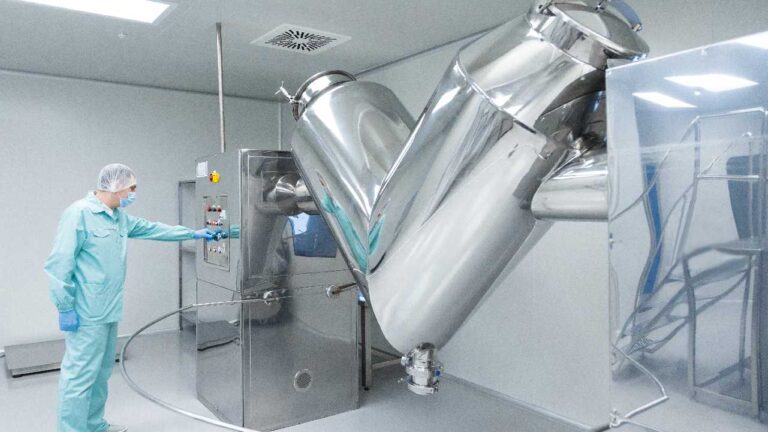
What are some examples of stability studies that can be done during early development to ensure that patients will receive safe and effective drugs?
API must be tested in biorelevant media such as simulated gastric fluid, fasting and fed state stimulated intestinal fluid. The study should also evaluate hygroscopy and polymorphic changes, stability in light and heat, and even solubility and stability in analytical and process solvents.
Bioavailability and Bioequivalence Studies: These studies are designed to compare the rate and extent of drug absorption from different formulations. These studies help to identify differences in the drug’s absorption, distribution, metabolism, and excretion (ADME) profiles.
Pharmacokinetic and Pharmacodynamic Modeling and Simulation: These studies use mathematical models to predict how the different formulations will behave in patients based on data from preclinical and clinical studies. These models can also help to optimize dosing regimens for each formulation.
Clinical Monitoring: Patients should be carefully monitored in clinical trials to detect any unexpected pharmacokinetic or pharmacodynamic differences between formulations. This monitoring can help to identify differences in safety and efficacy between the formulations.
Formulation Optimization: If significant differences are observed between formulations, additional studies may be necessary to determine the appropriate course of action. This may include reformulating the drug to improve its safety and efficacy.
Therapeutic Equivalence: In some cases, it may be necessary to demonstrate therapeutic equivalence between the different formulations. This can be accomplished through bioequivalence studies, clinical endpoint studies, or other methods.
It is highly recommended to conduct a polymorph screening study if the drug is intended to remain in crystalline solid form. This study ensures that the most stable polymorph of the drug is selected. A polymorph is a different crystal structure of the same compound, and each polymorph can have different physical properties, such as melting point, solubility, and stability. Therefore, it is important to identify the most stable polymorph of the drug to ensure that patients receive safe and effective drugs.
How do physical properties of a drug (salt forms and polymorphs) influence development of formulation that will be administered to patients?
At Hycon, we have a saying: Select the right compound, then select the right form, and then select the right formulation. What that means is once you have nominated a lead compound that you plan to develop for clinical studies (i.e., you have selected the right compound), you really should do a thorough salt screening and polymorph study to ensure that you have the best solubility in the most stable form for your drug (i.e., select the right form). Polymorphs have different physiochemical properties that can affect bioavailability in patients. Only then should your progress into formulation development activities.
Unfortunately, not everyone takes this path and we sometimes come across programs with less than optimal solid forms, e.g., hygroscopic salts or metastable polymorphs, are being used going into Phase 2. This may be a huge problem if your formulation strategy involves a lipid-based form or amorphous dispersions. But if you’re using a crystalline form, for example, in micronization or co-micronization, a form change could be a problem for your solubility. If you haven’t done it before entering clinical trials, we recommend a polymorph screening and selection so all clinical studies are performed with the most stable polymorph.
In what ways is the Developability Classification System (DCS) more reflective of a patient taking a medication than the Biopharmaceutics Classification System (BCS)? What are some other approaches during preformulation that can address potential issues seen when dosing a patient?
The DCS and BCS differ in their approach to evaluating solubility, with the DCS considering the total dose to solubility ratio and the BCS focusing on the solubility of the highest dose strength in 250 mL of water. This can lead to discrepancies in drug classification, with a drug being classified as highly soluble by the BCS but poorly soluble by the DCS. Additionally, the DCS uses 500 mL to account for both the glass of water and gastrointestinal fluids.
It is important to note that while the BCS was developed as a regulatory tool for biowaivers, the DCS was designed to guide formulation development and address potential issues that could impact drug development and patient outcomes.
While the BCS has been useful in predicting the in vivo performance of drugs, particularly for oral formulation it does not consider other important factors such as stability, manufacturability, and safety.
The DCS, on the other hand, is a more comprehensive approach that takes into account multiple factors that can impact drug development, including solubility, permeability, stability, toxicity, and manufacturability. It also considers the potential impact of the drug on the target organ and other organs in the body. This holistic approach provides a more accurate reflection of the challenges that a drug may face in development and can help identify potential issues early on.
One of the key advantages of the DCS is its ability to consider the patient perspective. The DCS takes into account the patient experience of taking the drug, including factors such as dosing frequency, ease of administration, and potential side effects. This patient-centric approach can help ensure that the drug is not only effective but also tolerable and convenient for patients to take.
Another approach is to evaluate the physical and chemical properties of the drug in different formulations, such as solid dispersions or liposomes. This can help improve the solubility and bioavailability of the drug, making it more effective and easier to administer to patients. Additionally, particle size reduction techniques, such as milling or micronization, can improve the dissolution rate and bioavailability of poorly soluble drugs.
In addition to the DCS, there are other approaches that can be used during preformulation to address potential issues seen when dosing a patient. One approach is to perform a polymorph screening study to identify the most stable form of the drug. This can help ensure that the drug maintains its efficacy and stability during manufacturing and storage and that it is administered to patients in the most stable and effective form.
In addition to the DCS, there are other approaches that can be used during preformulation to address potential issues seen when dosing a patient. One approach is to perform a polymorph screening study to identify the most stable form of the drug. This can help ensure that the drug maintains its efficacy and stability during manufacturing and storage and that it is administered to patients in the most stable and effective form.
Another approach is to evaluate the physical and chemical properties of the drug in different formulations, such as solid dispersions or liposomes. This can help improve the solubility and bioavailability of the drug, making it more effective and easier to administer to patients. Additionally, particle size reduction techniques, such as milling or micronization, can improve the dissolution rate and bioavailability of poorly soluble drug.







